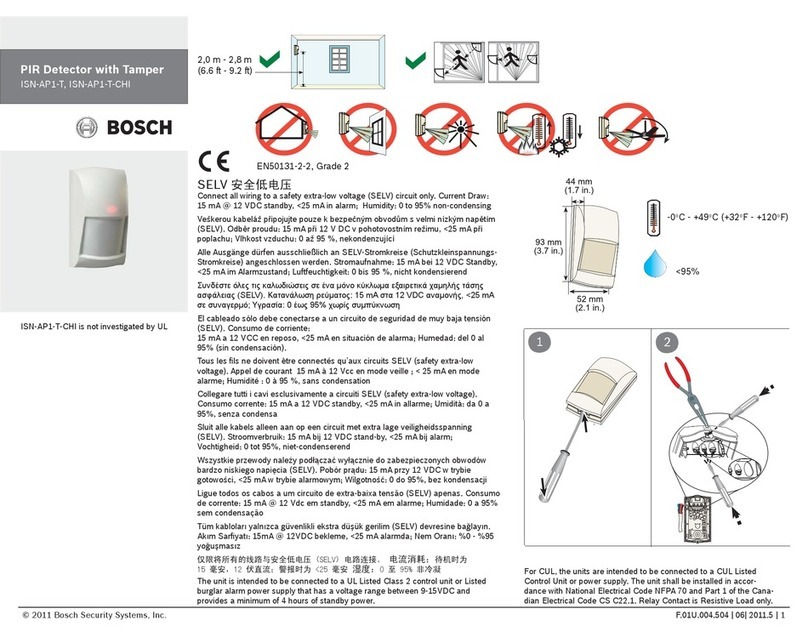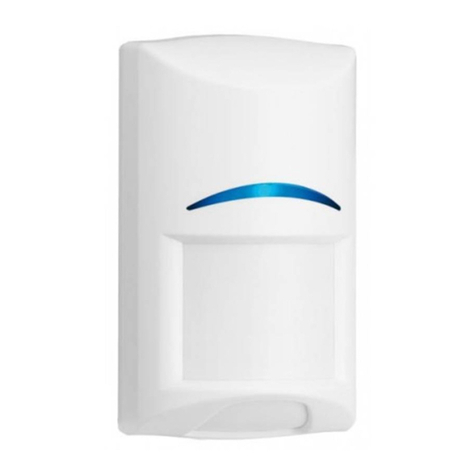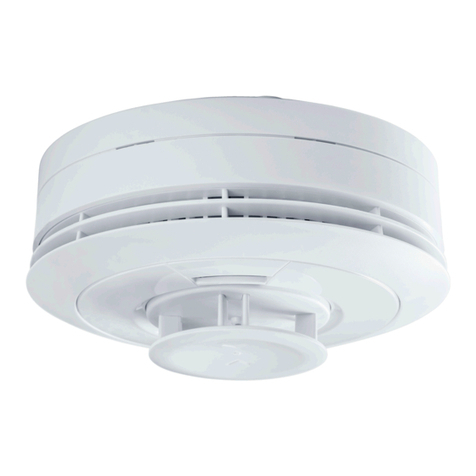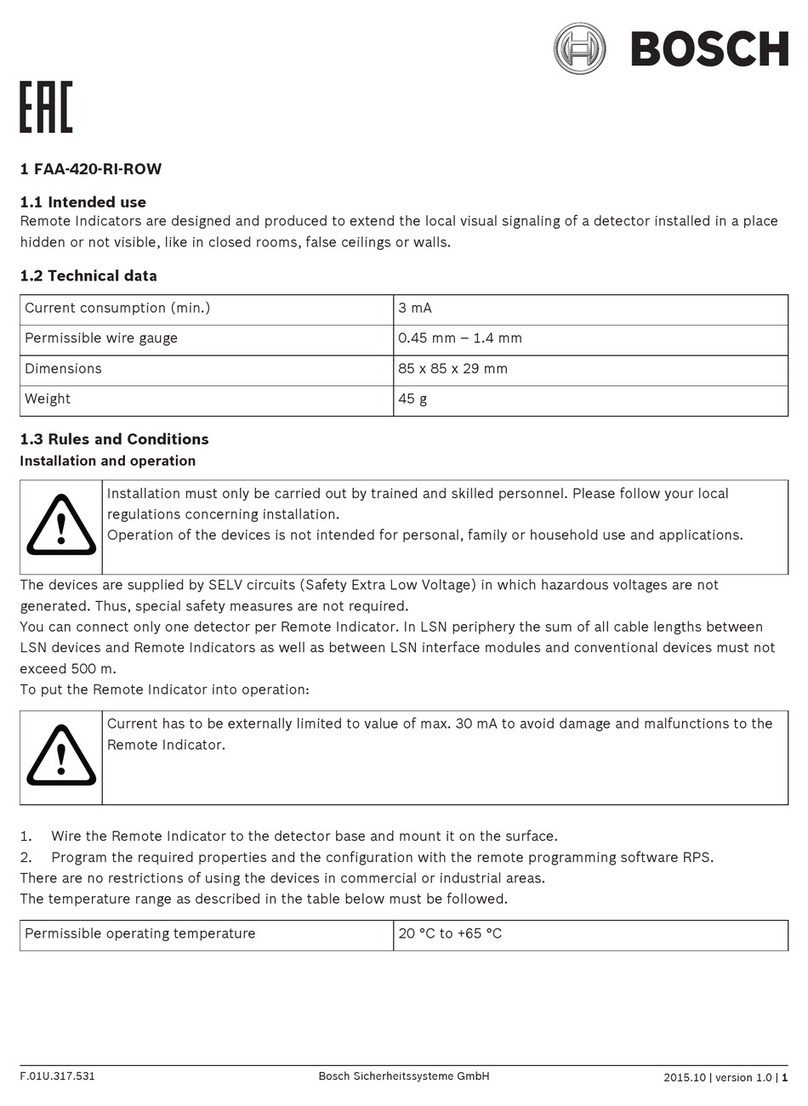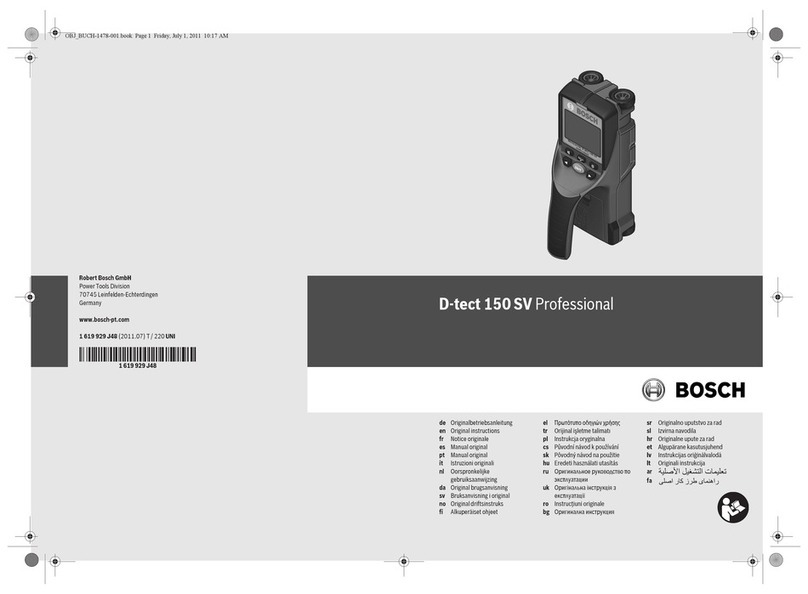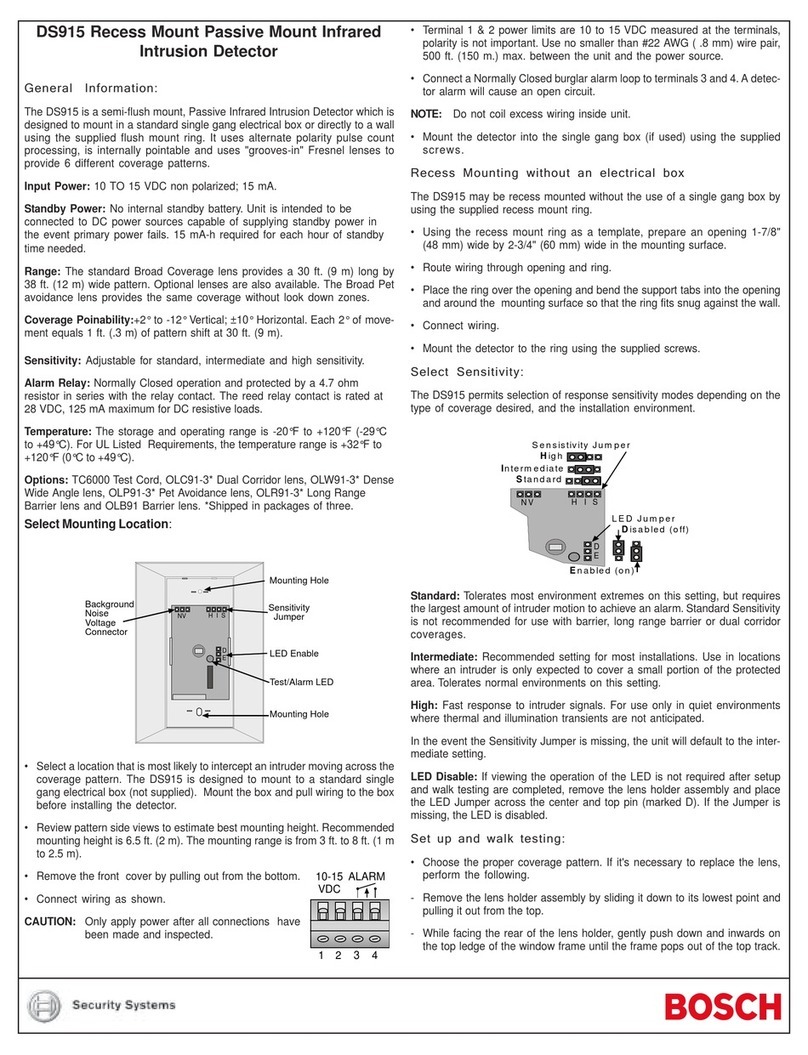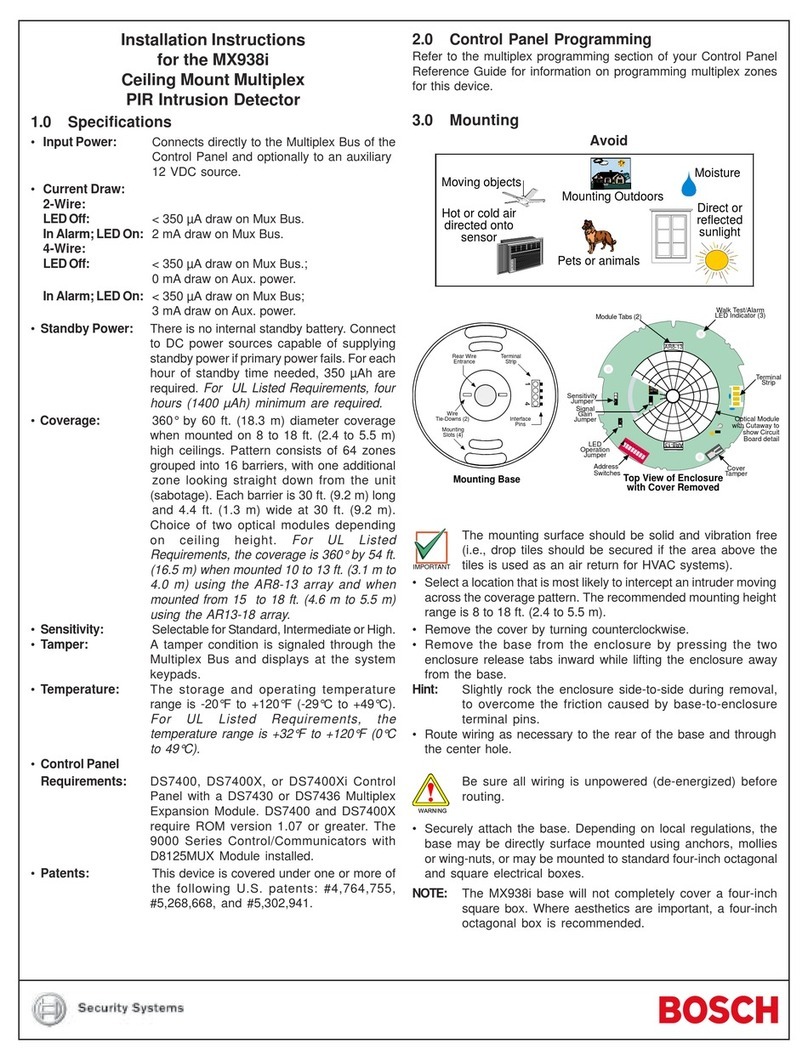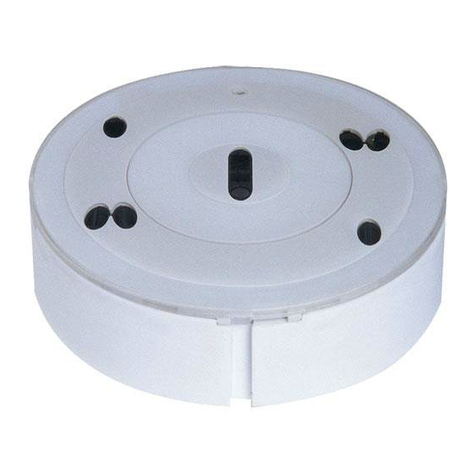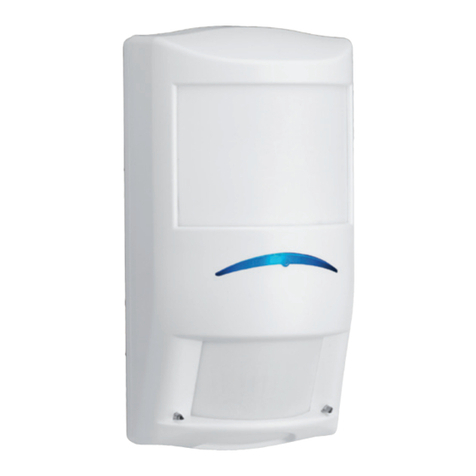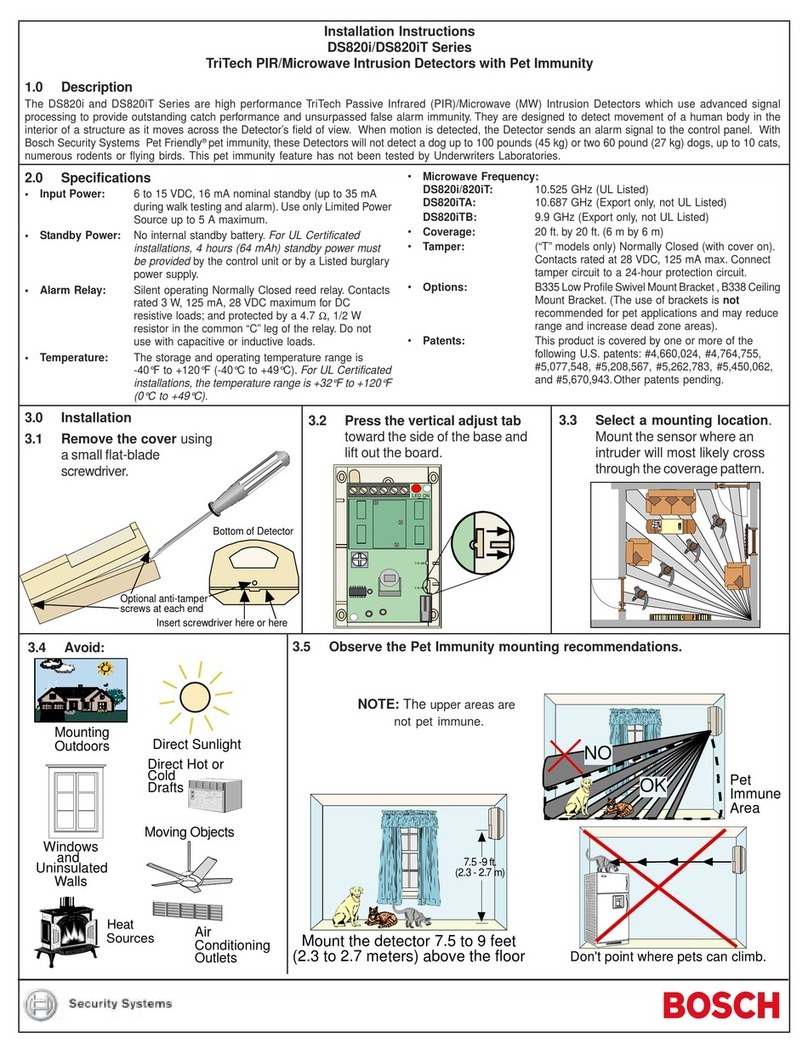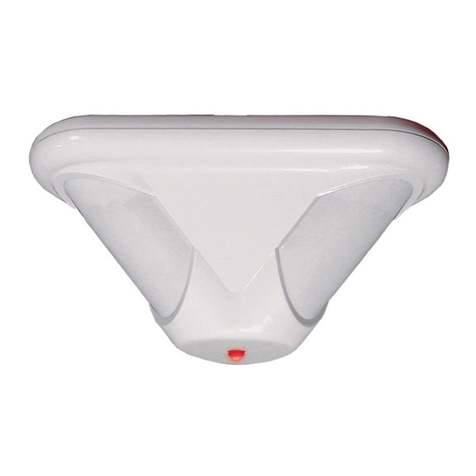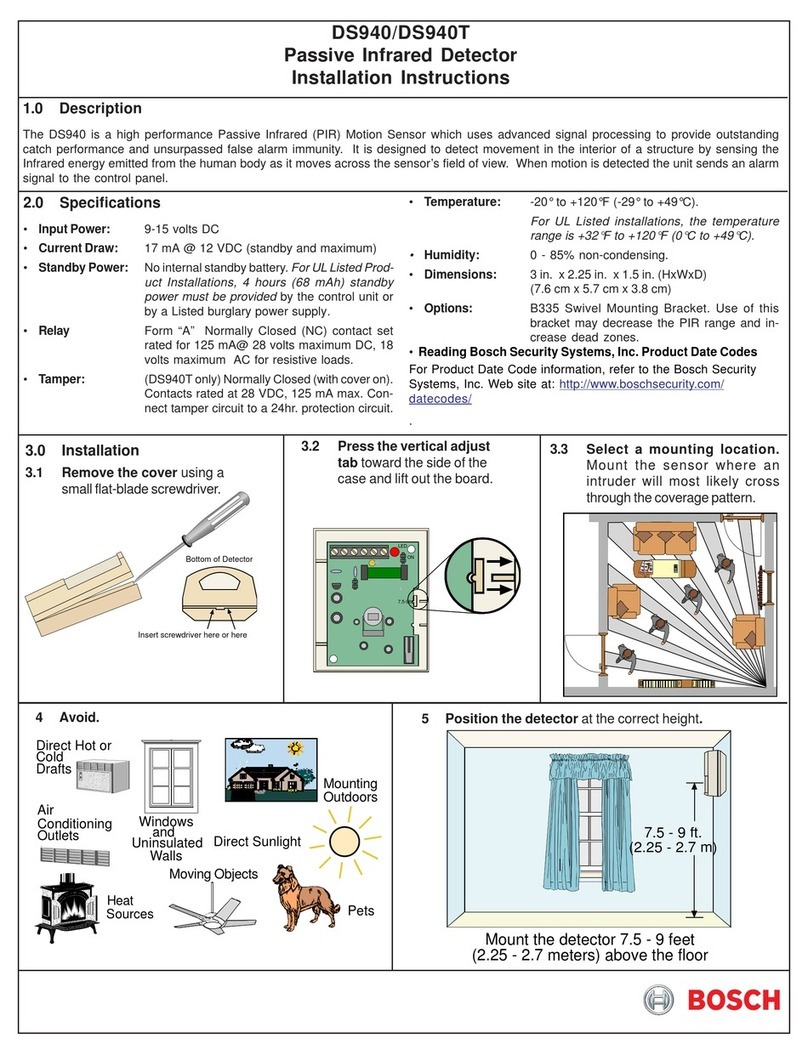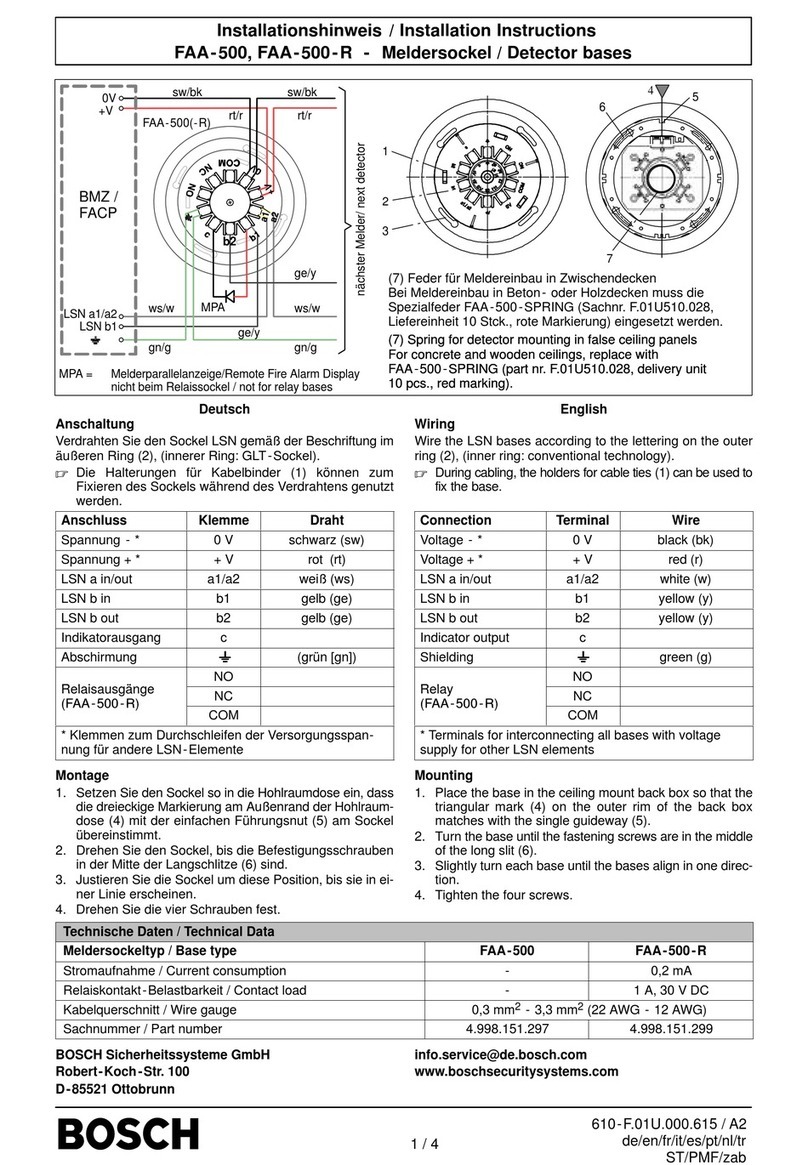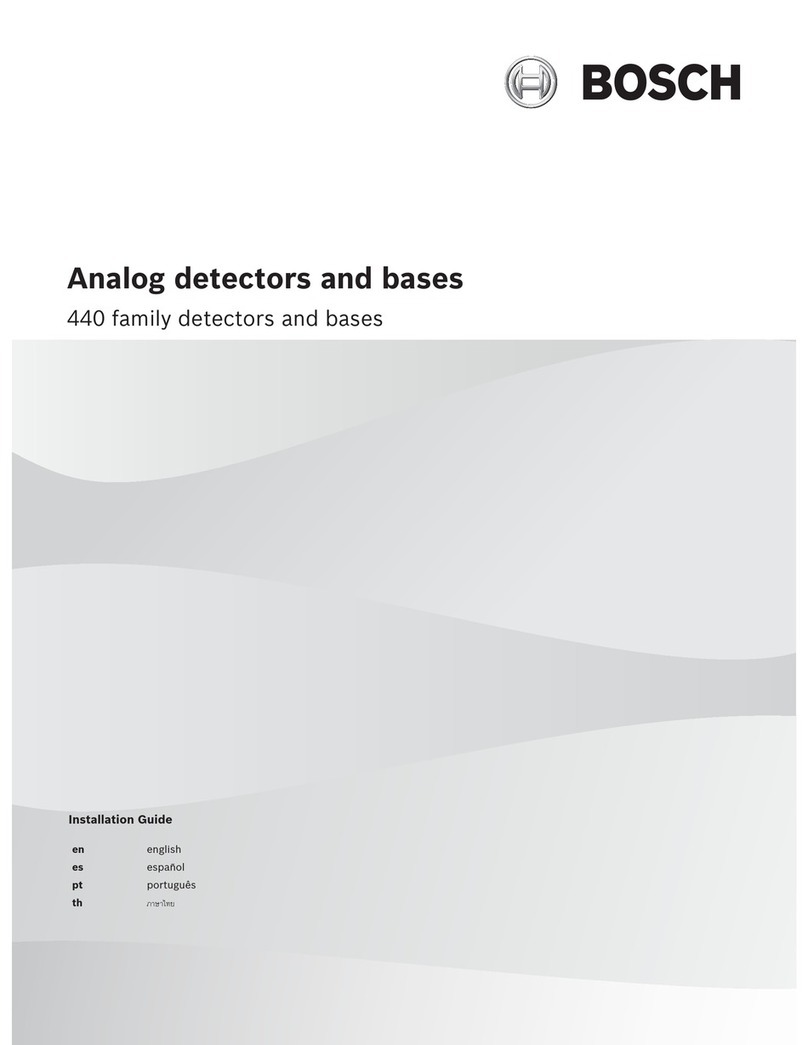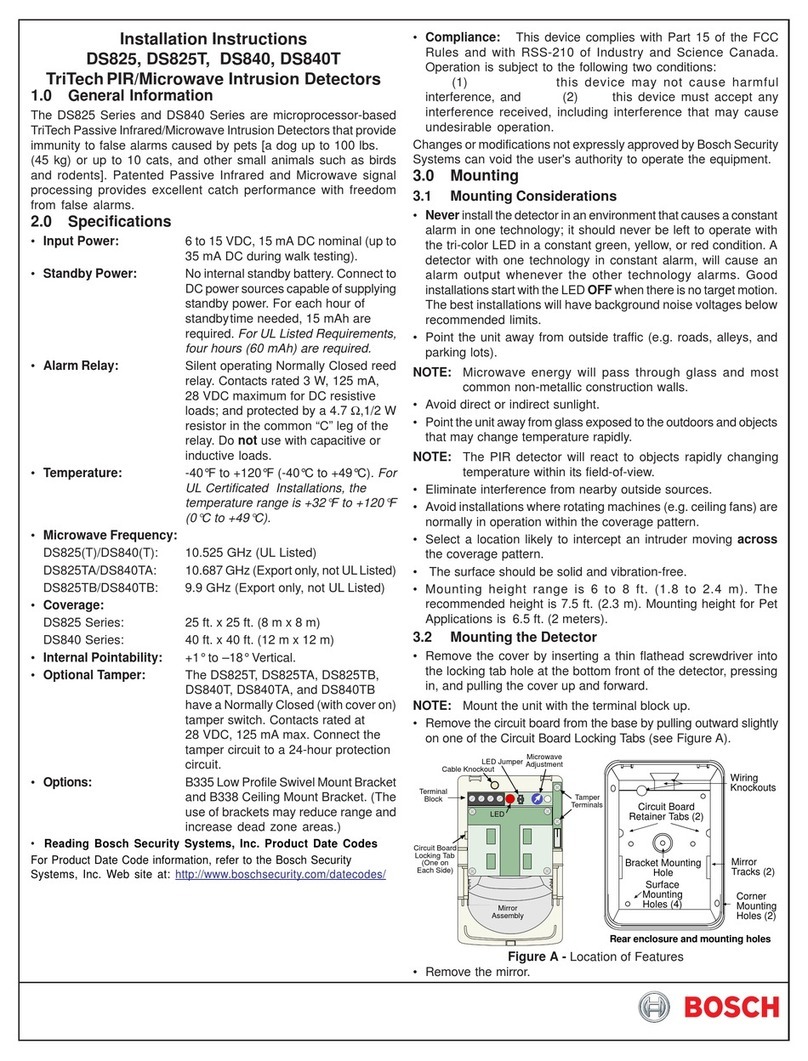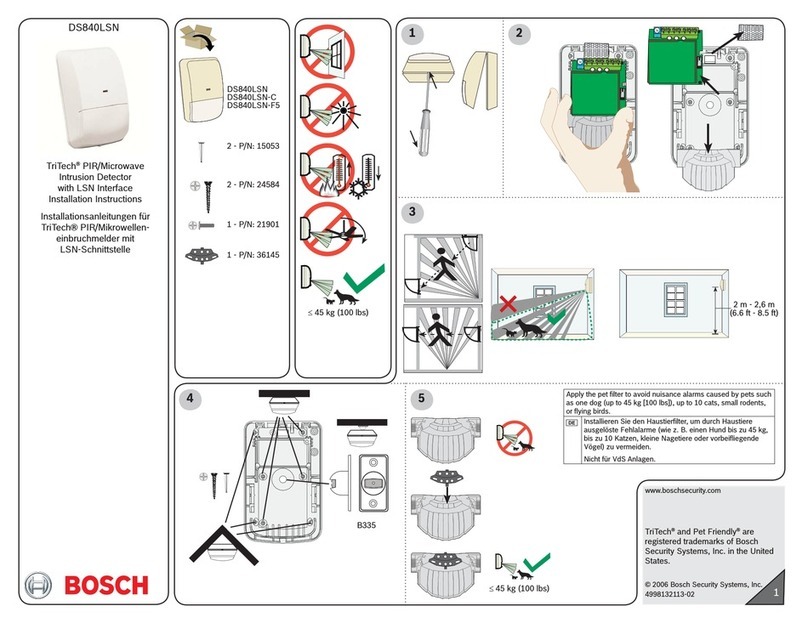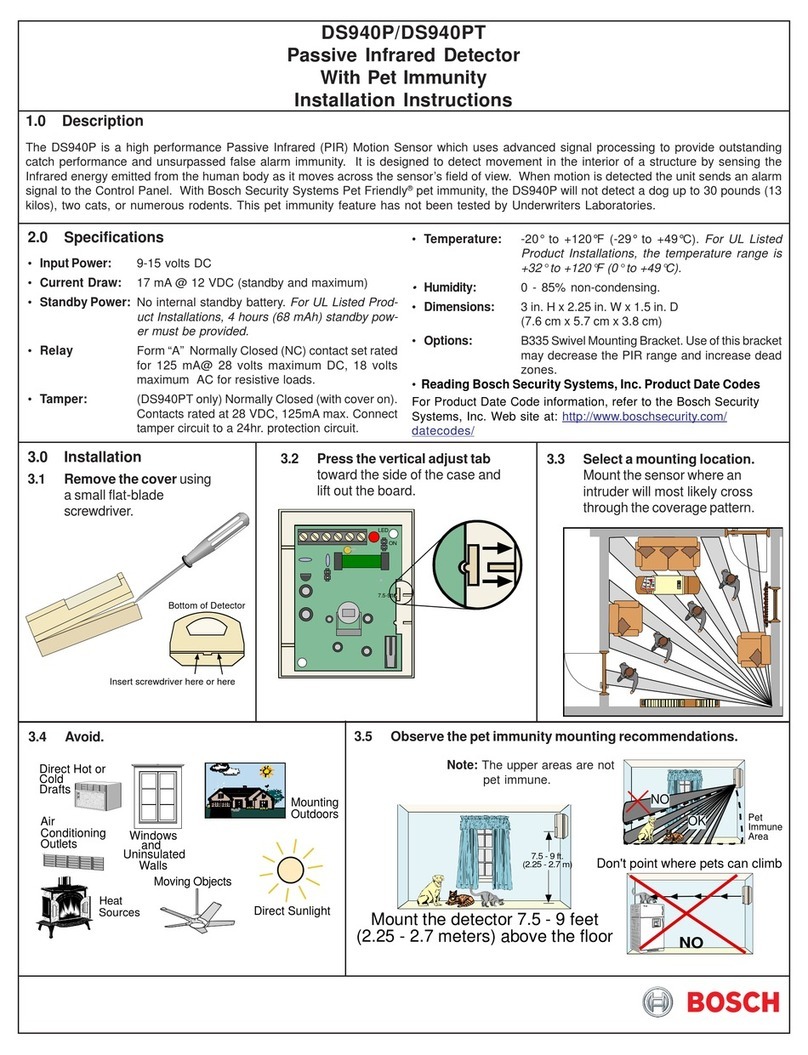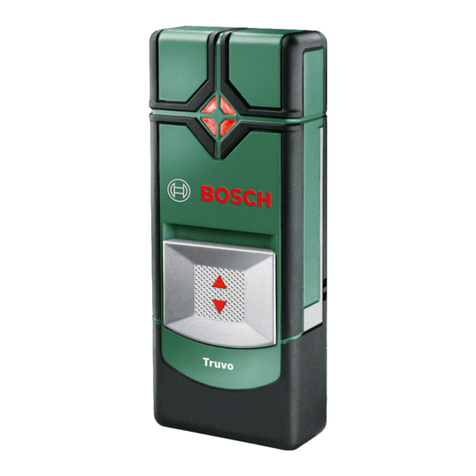
Installation Instructions
for the DS835 Series
TriTech Microwave/PIR Intrusion Detectors
1.0 Specifications
• Dimensions
(HxWxD): 5 in. x 2.8 in. x 2.2 in.
(12.7 cm x 7.1 cm x 5.6 cm)
• Input Power: 9to15VDC,16mADCnominal(upto48mA
DC during walk testing or trouble conditions).
Use only an Approved Limited Power
Source.
• Standby Power: No internal standby battery. Standby power
must be provided by an Approved Limited
Power Source. Sixteen mAh required for
each hour of standby time needed.
• Alarm Relay: Silent-operating Normally Closed reed relay.
Contacts rated 3 watts, 125 mA, 28 VDC
maximum for DC resistive loads; and
protected by a 4.7 ohm, ½ watt resistor in the
common"C"legoftherelay.Tobeconnected
to a SELV (Safety Extra-Low Voltage) circuit
only. Do not use with capacitive or inductive
loads.
• Tamper: Normally Closed (with cover on). Contacts
rated at 28 VDC, 125 mA max. To be
connected to a SELV (Safety Extra-Low
Voltage) circuit only. Connect tamper circuit
to a 24-hour protection circuit.
• Temperature Range: -40°F to +120°F (-40°C to +49°C). For UL
Listed requirements, the temperature range
is +32°F to +120°F (0°C to +49°C), indoor
use.
• Microwave Frequency:
DS835: 10.525 GHz (UL Listed)
DS835A: 10.687 GHz (Export only, not UL Listed)
DS835B: 9.9 GHz (Export only, not UL Listed)
• Coverage: 35 ft. by 35 ft. (10.7 m by 10.7 m)
• InternalPointability: +2° to –10° Vertical, ±10° Horizontal.
• Options: B328 Gimbal Mount Bracket, B335 Low
Profile Swivel Mount Bracket, B338 Ceiling
Mount Bracket
NOTE: Use of a bracket may reduce range and dead zone areas;
not recommended for installations containing pets.
• Compliance: This device complies with Part 15 of the FCC
Rules and with RSS-210 of Industry and
Science Canada. Operation is subject to the
following two conditions:
(1) This device may not cause harmful interference, and
(2) This device must accept any interference received, including
interference that may cause undesirable operation.
Changes or modifications not expressly approved by Bosch Security
Systems can void the user’s authority to operate the equipment.
• Reading Bosch Security Systems, Inc. Product Date Codes
For Product Date Code information, refer to the Bosch Security Systems,
Inc. Web site at: http://www.boschsecurity.com/datecodes/
2.0 Installation Considerations
• Never install the detector in an environment that causes an alarm
condition in one technology. Good installations start with the LED
OFF whenthereisnotargetmotion.Itshouldneverbelefttooperate
with the tricolor LED in a constant or intermittent green, yellow, or
red condition.
• Point the unit away from outside traffic (roads/alleys).
NOTE: Microwave energy will pass through glass and most
common nonmetallic construction walls.
• Avoid installations where rotating machines (e.g. ceiling fans) are
normallyinoperationwithinthecoveragepattern.Pointtheunitaway
from glass exposed to the outdoors and objects that may change
temperaturerapidly.
NOTE: The PIR detector will react to objects rapidly changing
temperaturewithinitsfield-of-view.
• Eliminateinterferencefromnearbyoutsidesources.
3.0 Mounting
• Select a location likely to intercept an intruder moving across the
coverage pattern. The surface should be solid and vibration-free.
Mounting height range is 6 to 8 ft. (1.8 to 2.4 m). Recommended
mounting height is 6.5 ft. (2 m).
• Remove the cover. Insert a flathead screwdriver into the locking tab
holeatthebottomfrontofthedetector.Pullthecoverupandforward.
Vertical
Adjust
Screw
Tri-color
LED
Terminal
Strip
LED
On/Off
Pins
MW
0°
- 4°
- 8°
On
Off
Microwave
Range Adjust
PIR
Sensitivity
Selection Pins
Vertical Adjust
Scale
Look Down Lens
MIN MAX
Face of Lens
(masking area)
Corner Mount
Knockout (4)
Surface Mount
Knockout (2)
Wire
Entrances
Bracket Mount
Knockout
Vertical Adjust
Screw Mount
Cover Tab and
Locking Screw Hole
Wire
Entrances
• Remove the circuit board from the base. Loosen the Vertical Adjust
Screwandslide the circuit board down, then out.
• Breakawaytheappropriatethin-wall wireentranceand mountinghole
coveringsinthebase.
• Usingthe baseasa templateandaligning it sothatthe detectorwillbe
mounted with the terminal block at the top and the PIR lens at the
bottom, mark the location of the mounting holes on the mounting
surface. Pre-start the mounting screws.
• Routewiringasnecessary. Route to the rear of the base and through
thewireentrance.Makesureall wiringisunpowered beforerouting.
• Securelyattachthebase to the mounting surface.
• Return the circuit board to the base and tighten the Vertical Adjust
Screw.

